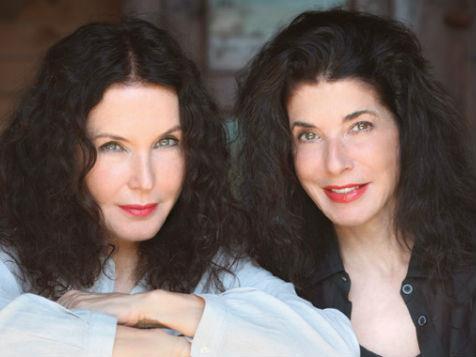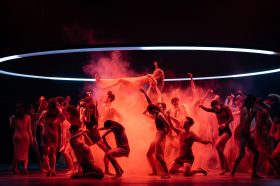The notion of two sisters who’ve been playing the piano together since their teens may not have immediate audience appeal – unless, of course, they’re the Labeques. Sisters Katia and Marielle have 20 years of performance behind them, but can still surprise and charm, as their one night at the Melbourne Festival proved.
More like twins, with their flowing black hair, trim figures and unfussy black pants, the Labeques are hard to distinguish on stage. One, however, had a very distinctive taste in footwear, her seriously clunky platform shoes useful for bringing her in close reach of the pedals; her sister’s choice was less remarkable.
With one sister sporting a white shirt and the other a black one, it seemed the Labeques had chosen to dress for their first item, Debussy’s En blanc et noir, a work in three movements. “With passion” was the first marking, and the sisters obliged, with the lush sound of two Steinways matched perfectly.
The range of dynamics throughout the work (with tempos from slow to scherzo) introduced the audience to the magic of the Labeques: their ability to play as one, yet without obvious eye contact throughout. This was even the case when each pianist had her own challenge: chords in the left hand and a tentative melody in the right, for instance. Whether it was the strong chords or fast-moving passages of the second movement, or the rhythm of the Scherzando (with the melody apparently tossed between the two pianos like a dialogue) the flow of music was secure, right to the last lovely, light broken chords.
If the Debussy was a showcase for the range of the pianists’ skills, his compatriot Ravel extended their reach, with his Rapsodie Espagnol which, as the title suggests, draws on the music of Spain. Prelude began seductively, with a very quiet repetition of a phrase by both pianists, the challenge being in the complex rhythms.
There was a beautiful quality to the soft accompaniment to a reiterated simple melody, but once the music segued into the Malaguena (with its suggestion of castanets) and then the Habanera there was excitement as well. Finally Feria brought contrasts: a rippling effect as the range of both pianos was explored, the staccato theme played against an “accompaniment”.
The technical demands were so great that one pianist half-rose from the piano-stool to cope as, after a brief quiet interlude, there were dramatic, amazing scales played in perfect synch. In just the first half of the concert, the Labeques had surely demonstrated all the techniques for which they are famous. Or so we thought.
After interval Katia and Marielle Labeque were joined by percussionists Raphael Seguinier and Gonzalo Grau for a performance of the West Side Story suite by Leonard Bernstein in an arrangement by Irwin Kostal that lifted the familiar music to unbelievable heights. The percussionists had a range of instruments, yet some of the “effects” were as simple as finger-snapping, whistling, and foot-stamping. The sense of rhythm was almost felt in the rests, as all four musicians recreated an orchestral score – in an entirely new way.
The Labeques’ pianos were as at home with the cool jazz of the Prologue as with the furious activity of Jets, creating that “hurried New York” effect that infuses the whole work. As you’d expect, the various dances – Cha Cha, Rock Blues, Mambo – were treated to all the showy effects the pianos (and percussion) could muster, including runs down the entire keyboard. “America” started subtly but soon turned to a showpiece for all concerned, one percussionist even turning his seat into a soundbox.
The quieter songs – “Maria”, “Somewhere”, “One hand, one heart”, for instance – highlighted the harmonic beauty of the pianos, with four hands in play. But there was still percussion, most memorably the seashells used as resonant castanets. The penultimate “Rumble” was almost shocking after the gentle “I have a love”, in which the pianos seemed like huge, brilliant extensions of the percussion instruments.
So the Finale was welcome, with its quiet mood and church-like bells. The long quiet note to end gave us a moment to reflect on what we’d heard: surely one of the most memorable performances of the Festival. I can only say that I am desperate to hear the whole thing again. Recording, please!Rating: 5 stars out of 5
Sat 19 Oct 2013 at 7.30pm
Melbourne Recital Centre
Melbourne Festival 2013
Image: Katia and Marielle Labeque by Melbourne Festival





